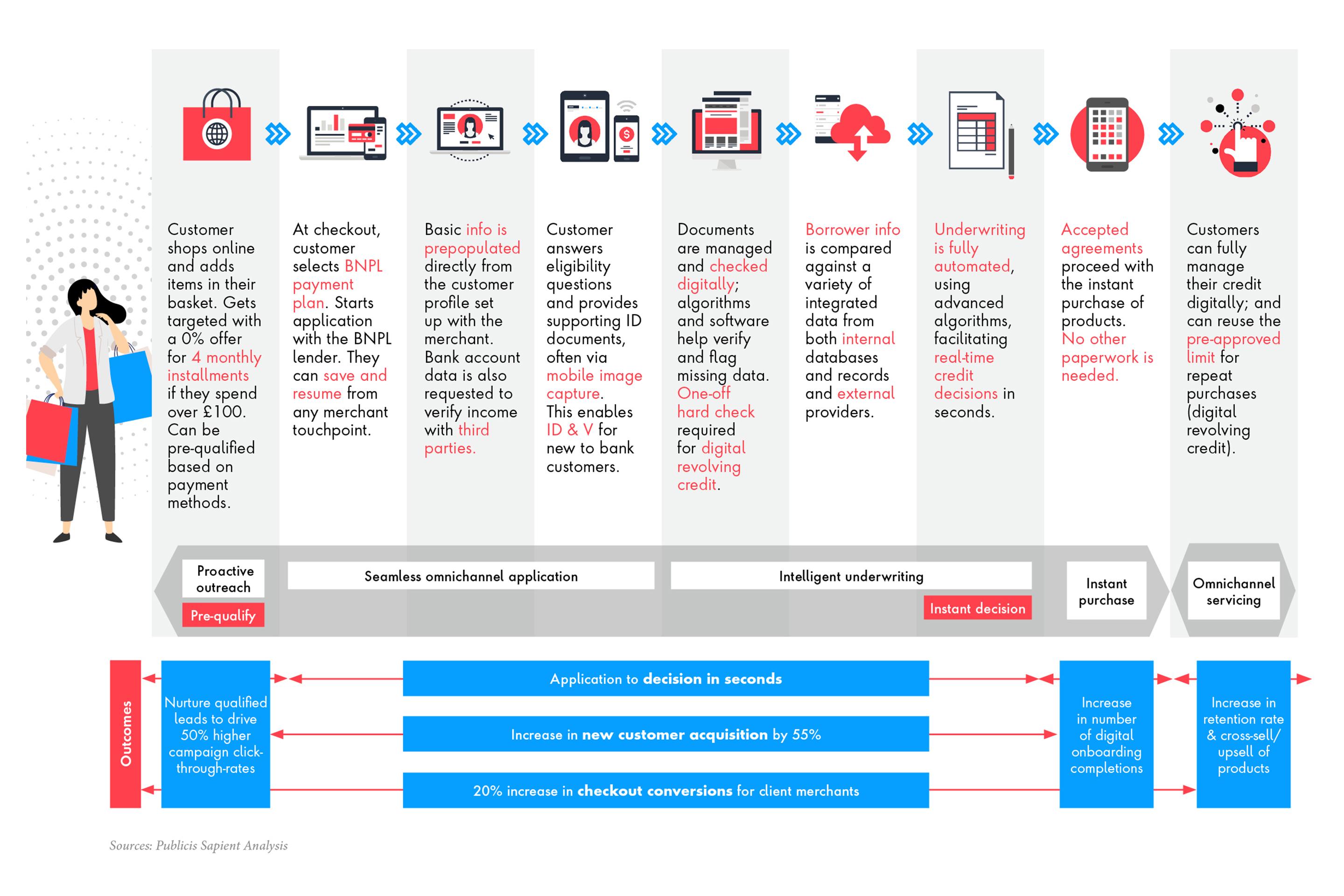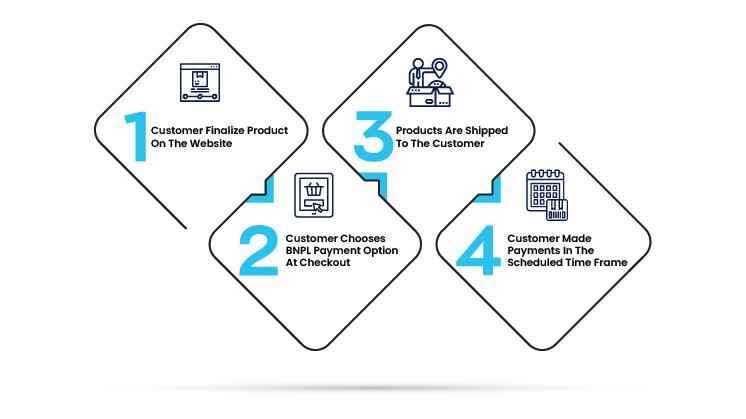In an era where consumer spending habits are evolving rapidly, the financial landscape is being reshaped by the rise of Buy Now, Pay Later (BNPL) services. As eager shoppers embrace flexible payment options, banks find themselves at a pivotal crossroads, tasked with harnessing this trend to foster growth and drive customer loyalty. The promise of BNPL is alluring, yet navigating its complexities requires strategic foresight and innovative thinking. This article delves into the essential strategies that banks can adopt to master the BNPL model, ensuring they not only thrive in this competitive market but also meet the shifting demands of modern consumers. Join us as we explore effective approaches that will empower financial institutions to turn the BNPL phenomenon into a sustainable advantage.
Understanding the BNPL Landscape: Trends and Market Insights
The Buy Now, Pay Later (BNPL) landscape has evolved significantly, driven by shifts in consumer behavior and technological advancements. As convenience becomes a key purchase driver, consumers increasingly prefer flexible payment options that align with their financial management strategies. This trend is not just limited to millennials; a broader demographic now embraces BNPL, including Generation X and even Baby Boomers. Banks and other financial institutions must recognize this shift and adapt to meet the demand for seamless, transparent BNPL solutions that offer both catering to customer needs and enhancing financial literacy.
To thrive in the evolving BNPL ecosystem, it’s essential for banks to understand several key trends shaping the market. These include:
- Integration of technology: Utilizing AI and machine learning for risk assessment and fraud detection.
- Regulatory pressures: Adapting to the evolving regulatory landscape aimed at protecting consumers.
- Partnerships: Collaborating with retailers to offer strategic BNPL solutions at point-of-sale.
Moreover, a keen insight into competitor strategies can empower banks to innovate effectively. The following table illustrates some effective strategies from leading BNPL providers:
| Provider | Strategy | Outcome |
|---|---|---|
| Affirm | Transparent fee structures | Increased customer trust |
| Klarna | Shopping app integration | Enhanced user engagement |
| Afterpay | Community engagement initiatives | Improved brand loyalty |

Building Customer Trust: Transparency and Responsible Lending Practices
In the ever-evolving landscape of Buy Now, Pay Later (BNPL) services, earning customer trust is paramount. To foster a relationship built on transparency, banks must prioritize clear communication about the terms and conditions of their lending practices. When customers understand not just the repayment process but also the potential consequences of their financial decisions, they are more likely to engage positively with the services offered. This clarity can be achieved through straightforward documentation, informative webinars, and easily accessible FAQs that demystify the BNPL process.
Moreover, responsible lending practices play a crucial role in building customer confidence. By implementing fair underwriting standards and thorough customer assessments, banks can ensure that loans are accessible to those who can manage them effectively. This responsible approach not only helps customers avoid the pitfalls of over-borrowing but also cultivates a reputation for integrity within the financial industry. Banks might also consider utilizing technology to provide real-time feedback on spending habits, which can empower customers to make informed financial choices. Here’s a simple breakdown of the key components:
| Component | Description |
|---|---|
| Clear Communication | Ensure customers understand terms and fees |
| Fair Underwriting | Assess customer eligibility responsibly |
| Real-time Feedback | Provide insights into spending habits |

Innovative Technology Integration: Enhancing the BNPL Experience
As the Buy Now Pay Later (BNPL) sector continues to evolve, the integration of innovative technology is essential for banks to stay competitive. Leveraging artificial intelligence and machine learning can significantly enhance the customer experience by providing personalized payment solutions. Banks can utilize these technologies to analyze consumer behavior, allowing for tailored offers that resonate with individual purchasing habits. For instance, predictive analytics can enable financial institutions to forecast which customers are likely to opt for a BNPL option, ensuring timely engagement and effective marketing strategies. Key benefits include:
- Enhanced Fraud Detection: Advanced algorithms can quickly identify atypical spending patterns.
- Seamless User Experience: Automating the application and approval processes can reduce friction during transactions.
- Real-time Analytics: Instant insights into customer preferences help in adjusting offerings swiftly.
Moreover, incorporating blockchain technology can increase transparency and security in BNPL transactions. By creating a decentralized record of agreements and payments, banks can foster trust among users, making them more likely to engage with BNPL options. Furthermore, integrating digital wallets into BNPL services offers customers a convenient way to manage their finances, promoting user loyalty. The following table outlines potential advantages of integrating blockchain in BNPL:
| Advantage | Description |
|---|---|
| Transparency | All transactions are recorded and visible on the blockchain. |
| Security | Data encryption reduces the risk of hacks and fraud. |
| Efficiency | Faster transaction times compared to traditional systems. |

Diversifying Product Offerings: Tailoring Solutions for Different Consumer Segments
In the competitive landscape of Buy Now, Pay Later (BNPL) services, banks must understand that one-size-fits-all solutions are often ineffective. Tailoring product offerings to meet the specific needs of diverse consumer segments can significantly enhance user satisfaction and loyalty. By segmenting the market, banks can identify key demographics and their unique preferences. For instance, younger consumers may prioritize instant approval and mobile compatibility, while older segments might favor flexible repayment options and personalized customer service. Offering products like short-term payment plans for impulse buyers or long-term installment options for larger purchases can effectively cater to these varying needs.
Moreover, leveraging data analytics can provide valuable insights into consumer behavior and spending habits, enabling financial institutions to create targeted marketing strategies. By analyzing transaction histories, banks can also identify seasonal trends and customize promotional offers accordingly. Implementing a tiered product structure can serve to meet varying levels of financial literacy and confidence among consumers. Consider the following table as an example of potential offerings:
| Consumer Segment | Product Offering | Key Features |
|---|---|---|
| Young Adults | Quick Approval BNPL | Instant credit, mobile app integration |
| Families | Flexible Repayment Plans | Multiple installments, budget tracking |
| Seniors | Assured Payment Schedules | Personalized assistance, low-interest rates |
Key Takeaways
as we navigate the evolving landscape of Buy Now, Pay Later (BNPL), it becomes clear that success hinges on a strategic approach tailored to the unique needs of banks, consumers, and merchants alike. By embracing innovation with prudence, fostering transparent relationships, and continually adapting to market dynamics, financial institutions can position themselves at the forefront of this burgeoning trend. The keys to mastering BNPL lie not only in technology but also in understanding the nuances of customer behavior and regulatory landscapes. As banks embark on this journey, collaboration and a commitment to responsible lending will be essential pillars that support sustainable growth and foster consumer trust. The future of BNPL holds immense potential, and with the right strategies in place, banks can turn this opportunity into a thriving component of their service offerings, ultimately redefining the customer experience in the world of finance.
